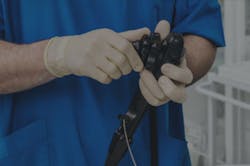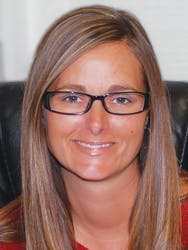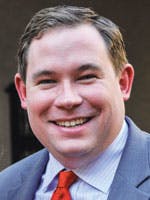Exploring the science behind true sterility
Infection preventionists, nurses, supply chain and sterile processing professionals simply cannot leave an educational conference without hearing the phrase, “if it’s not clean it cannot be sterilized,” mentioned in one form or another at least once.
In the clinical world, that mantra should be readily and technically understood. This isn’t necessarily the case outside of the clinical – including infection prevention and sterile processing – realms and most certainly not in the consumer world as noted by the confusion reported in a variety of media outlets.
So as a refresher service to readers and ideally a reference point for consumer media outlets, Healthcare Purchasing News sought to set the record straight by asking noteworthy sterile processing experts to explain in some detail the science behind the “clean first, then sterilize” modus operandi.
For example, on a molecular level, how specifically does bioburden left behind contribute to or convert to any variety of infections – including superbugs? How specifically does the bioburden run through a high-level disinfector or sterilizer develop an immunity to disinfectants? HPN felt it was important to at least explore the biological and chemical reactivity between the bioburden, disinfecting/sterilizing agents and the physiology of the next patient – particularly if that patient is immunocompromised.
Brianne Flesher, Flexible Scope Division Manager, Mobile Instrument Service & Repair Inc.
When organic material, such as bone, blood, feces, and mucus are left on instrumentation from improper cleaning, bacteria will find vulnerable areas, such as cracks, grooves, scratches or crevices to embed themselves for protection. Bacteria will breed by dividing into two through a process called binary fission. This allows them to reproduce at an astronomical speed. In fact, one bacterium can become one billion (1,000,000,0000) bacteria in 10 hours! As they multiply, they excrete a slimy, glue-like substance that creates a barrier or fortress called biofilm. Bacteria then mature and slow down their metabolism to create a colony.
When improperly cleaned devices still contain biofilms after processing, those deposits can cause harmful pathogens or fragments of biofilm to enter a patient during a procedure. This results in a patient requiring a course of antibiotics to eliminate infection. However, antibiotics are not 100 percent effective. When antibiotics are introduced to the system, most bacteria are destroyed, but some will survive by DNA mutation. These bacterial DNA mutations then form antibiotic-resistant colonies known as superbugs. This mutation reproduces and materializes into superbug infections that cannot be treated with traditional antibiotics.
To put this process in perspective, think of a dirty dish and a dishwasher. The first step is to manually scrub off all the food and saliva with a detergent and brush. The next step is to rinse and put it into an automatic dishwasher. It is loaded with a detergent to aid in the removal of food and debris (chemical disinfection) as well as a heat cycle (thermal disinfection), followed by a dry cycle. What happens to food on the dish if you skip the manual process? Food becomes baked on with a hard layer protecting it (biofilm), making it difficult to remove. Sometimes, scrubbing is ineffective and one must soak the dish to soften the food to be able to remove it. This is an example of how a skipped step in the instructions for use (IFU) can make disinfectants and automated washers ineffective on penetrating the biofilm layer.
With antibiotic-resistant infections on the rise and the declination in production of new antibiotics, it is ever more important to stop biofilm before it starts! How do you accomplish this? Always follow up-to-date manufacturer IFUs. Pre-treatment/bedside cleaning should be performed immediately after the procedure. Keep the device moist so organics do not dry on the surface. Transport to decontamination in Central Sterile as soon as possible for immediate processing.
Lisa Wakeman, CHL, CIS, CRCST, MBTI, National Director of Education, Circle of Care, Fresno, CA
Bioburden acts as a barrier to a sterilant (cleaning agent). Any sterilant agent, administered either by means of a chemical or steam, must have contact with the surface of a device, under the right conditions (i.e.; exposure time, pressure, and temperature) in order to kill enough microbes to be considered safe for patient use. Microbes that survive underneath a microbial layer of bioburden impose a potential threat because the process can breed stronger microbes (bugs) that have the ability to adapt to increasingly harsher environments, making the likelihood of infection even greater. Microbes can change certain characteristics of their composition. For example, some bacteria can collect pieces of DNA from another species of bacteria as it makes contact with it, and therefore become an entirely different type of bacteria. This process is called transduction. Virulence is the ability of an organism to cause disease. When microbes are allowed to survive in an environment, which is favorable to adaptability, they have an increased potential to be opportunistic and cause harm.
Donna Swenson, President and CEO, Sterile Processing Quality Services Inc., Stickney, IL
Sterilization and disinfection are logarithmic functions. This means that bacteria subjected to a disinfectant or sterilant will be killed at a rate that is proportional to the number of microorganisms present on the device being disinfected or sterilized. In other words, a lower exposure time is needed to kill a smaller number of microorganisms or vice versa more exposure time will be needed to kill a larger number of microorganisms.
Disinfection and sterilization processes are set at certain parameters that the technician is expected to follow. These parameters were determined based on a maximum number of microorganisms being present on a device. If the number of microorganisms present on the device is higher than the maximum number that the parameters are set for then the process will fail.
Cleaning processes are intended to accomplish two goals: Removal of all visible soil and reduction of the microbial bioburden to a level which will allow the subsequent disinfection or sterilization of the device. Inadequate cleaning might result in the number of microorganisms present on a device being higher than the maximum number that the disinfection or sterilization process is capable of killing in the given exposure time used.
The chart on the next page demonstrates how this process works and why it is possible that a poorly cleaned device may not actually be disinfected or sterilized after being subjected to a disinfection or sterilization process.
In the hypothetical situation illustrated in the chart, based on the number of microorganisms present and before cleaning, a minimum of 12 minutes of exposure to the disinfectant/sterilant would be required to disinfect/sterilize the device. If this was a steam sterilization process that would mean that the most common sterilization cycle used in U.S. healthcare facilities would not sterilize the device. The most common sterilization cycle used in U.S. healthcare facilities is set for 4 minutes of exposure; but 12 minutes of exposure would be needed to sterilize the device. In the situation where the device is cleaned but not adequately so that there is still a high bioburden present on the device it again would not be possible to disinfect/sterilize the device. Only in the situation where the device has been adequately cleaned and the bioburden has been effectively reduced is it possible to disinfect/sterilize the device.
It is possible that a device can appear to be visibly clean but may in fact have a bioburden that is higher than the disinfection or sterilization process is capable of killing. This is why manufacturers are required to validate their cleaning and sterilization processes, and reprocessors should follow the validated cleaning process. In the lab, measurements are made of specific “cleaning markers” to determine if the bioburden is low enough for subsequent cleaning or sterilization. Visibly clean devices can have “marker” levels that are above acceptable limits. When this happens the cleaning process is considered to be inadequate and the manufacturer needs to develop a new process that will reduce the “marker” level to below acceptable limits.
Keep in mind that disinfection and sterilization cycles are validated at a specific exposure time and then for actual use that exposure time is increased. For steam sterilization we use a “half-cycle” or two minutes of exposure at 270oF (132oC) to validate the process and then the cycle used is for 4 minutes of exposure time. There are other time and temperature parameters that can also be used, but the same concept is used; the validation cycle exposure time will be half of the actual stated exposure time that should be used.
Cleaning and sterilization processes validated by medical device manufacturers are based upon the bioburden present on the device being effectively removed prior to sterilization. If this does not happen then the process will potentially fail. This does not mean that the patient on this device is used will get an infection as there are many other factors that influence whether a person will get an infection. But if this happens the chances of the person getting an infection will be greater than if the device had been adequately cleaned, disinfected and/or sterilized. If the patient is immunocompromised, then the possibility of an infection increases even more.
Stephen Kovach, Director of Education, Healthmark Industries
[This] is what I call the “illusion of clean” or how clean is clean. We are reminded of two sayings. First, if a medical device is not clean it is not sterile. Second, I would rather have a clean medical device not sterilized used on me than a dirty sterilized device used on me.
While there is continued debate on how clean is clean or how many micrograms (μg) of some residue can be left on a device, the standard is first visually clean. If you can see dirt or a stain on a device, re-clean it. The real goal is to detect a level low enough so one can be certain that the item tested is clean in case nothing is detected. In the case of an unsuitable detection limit even a large amount of residue would give a good result! Protein the size of only 1μg is visible to the naked eye on an instrument and no one would even consider using this instrument on the next patient.
If the standard is visually clean, what can the unaided eye see and what products can detect that low to give results that people will be comfortable with?
The picture below is of 2μg of denatured protein on a stainless steel plate. If a surgical instrument has that type and size of stain on it, it would be re-cleaned. It is not visually clean and the standard is visually clean, so you re-clean it.
J. Hudson Garrett Jr., Ph.D., MSN, MPH, FNP-BC, PLNC, VA-BC, IP-BC, FACDONA, Global Chief Clinical Officer, Pentax Medical-Hoya Corp.
Sterilization and/or disinfection efforts are only as effective as the cleaning process that occurs prior to these more advanced methods. When physical bioburden or soil is present on an environmental surface or medical device, it must be physically removed from the surface and only then can the surface or device be disinfected or sterilized. Failure to remove this bioburden can result in decreased efficacy of the disinfectant used on the environmental surface or device, and also cause sterilization failures due to the level of contamination present. Cleaning must always take place before disinfection and sterilization on soiled instruments or environmental surfaces. To improve our success, it is important for SPD professionals to collaborate with their colleagues in Environmental Services as they are true experts in the clinical environment of care. Specialty training in this arena is available through the Association for the Healthcare Environment (AHE).
About the Author
Rick Dana Barlow
Senior Editor
Rick Dana Barlow is Senior Editor for Healthcare Purchasing News, an Endeavor Business Media publication. He can be reached at [email protected].






